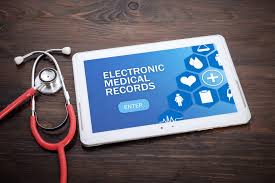Urgent Care Facilities See Surge in EMR Adoption Amid Growing Patient Demand
 Dallas, TX — Urgent care centers across the United States are rapidly adopting Electronic Medical Records (EMR) systems in response to increasing patient volumes and the need for efficient, high-quality care. This trend is driven by the growing popularity of urgent care facilities as a convenient alternative to traditional emergency rooms and primary care visits.
Dallas, TX — Urgent care centers across the United States are rapidly adopting Electronic Medical Records (EMR) systems in response to increasing patient volumes and the need for efficient, high-quality care. This trend is driven by the growing popularity of urgent care facilities as a convenient alternative to traditional emergency rooms and primary care visits.
The urgent care industry has seen significant growth over the past decade. According to the Urgent Care Association (UCA), the number of urgent care centers in the U.S. has surpassed 9,000, a number that continues to climb annually. This rise is fueled by patients seeking prompt medical attention for non-life-threatening conditions without the long wait times often associated with emergency rooms.
Electronic Medical Records (EMR) systems have become an integral part of this transformation, offering several benefits to urgent care facilities. These systems streamline patient management, improve the accuracy of medical records, and enhance overall care coordination.
“Implementing an EMR system has allowed us to significantly reduce patient wait times and improve the quality of care we provide,” said Dr. Lisa Patel, Medical Director of Rapid Care Urgent Center in Dallas. “We can now access patient histories, lab results, and other critical information instantly, which is crucial for making informed medical decisions quickly.”
Key Benefits of EMR Systems
EMR systems reduce the need for paper records, thereby speeding up administrative processes and allowing healthcare providers to focus more on patient care.
With digital records, the risk of errors due to illegible handwriting or misplaced files is minimized. This leads to better patient outcomes and reduced liability for urgent care centers.
EMR systems enable seamless sharing of patient information among healthcare providers, ensuring continuity of care even when patients visit different facilities.
EMRs help urgent care centers comply with healthcare regulations and facilitate easier reporting for quality assurance and reimbursement purposes.
Despite the clear advantages, the transition to EMR systems is not without challenges. Many urgent care centers face hurdles such as high implementation costs, staff training requirements, and data migration issues. However, various solutions and incentives are available to ease this transition.
Government programs, like the Medicare and Medicaid EHR Incentive Programs, offer financial incentives for adopting certified EMR technology. Additionally, many EMR vendors provide comprehensive training and support to ensure a smooth implementation process.
The integration of EMR systems is just one aspect of the technological advancements transforming urgent care. Telemedicine, artificial intelligence, and mobile health applications are also gaining traction, further enhancing the accessibility and quality of urgent care services.
“Technology is playing a pivotal role in reshaping how we deliver urgent care,” said Dr. Patel. “As we continue to embrace these innovations, we can expect to see even more improvements in patient satisfaction and healthcare outcomes.”
The adoption of EMR systems in urgent care centers is a crucial step towards modernizing healthcare delivery. As patient demand for convenient, high-quality care continues to rise, these digital tools will be essential in meeting the needs of both patients and providers, ensuring a more efficient and effective healthcare system.Read more